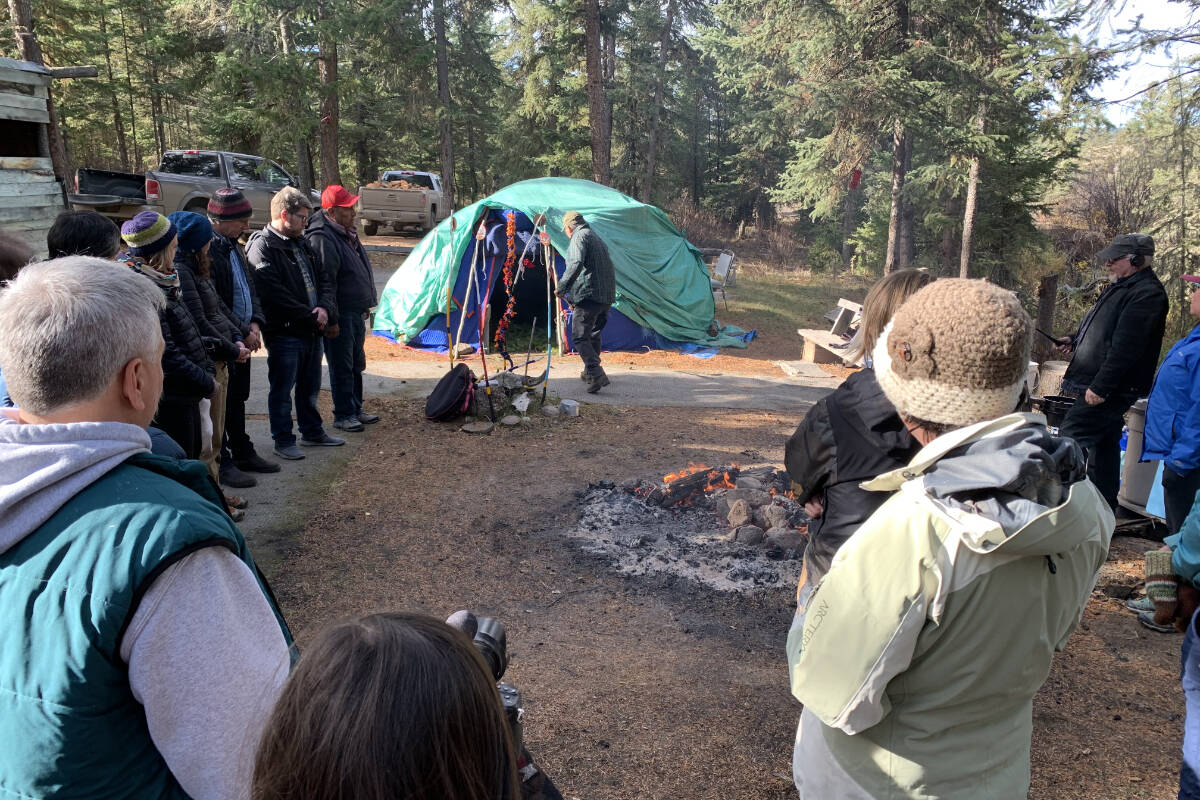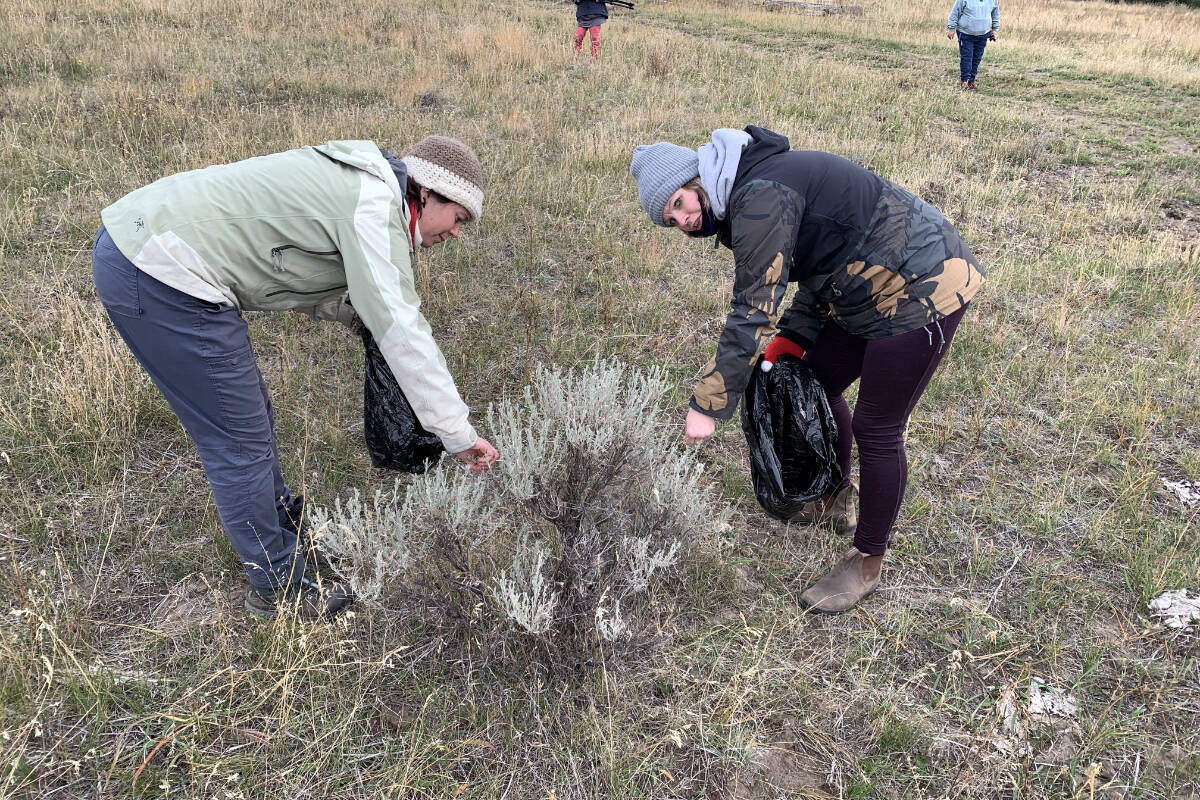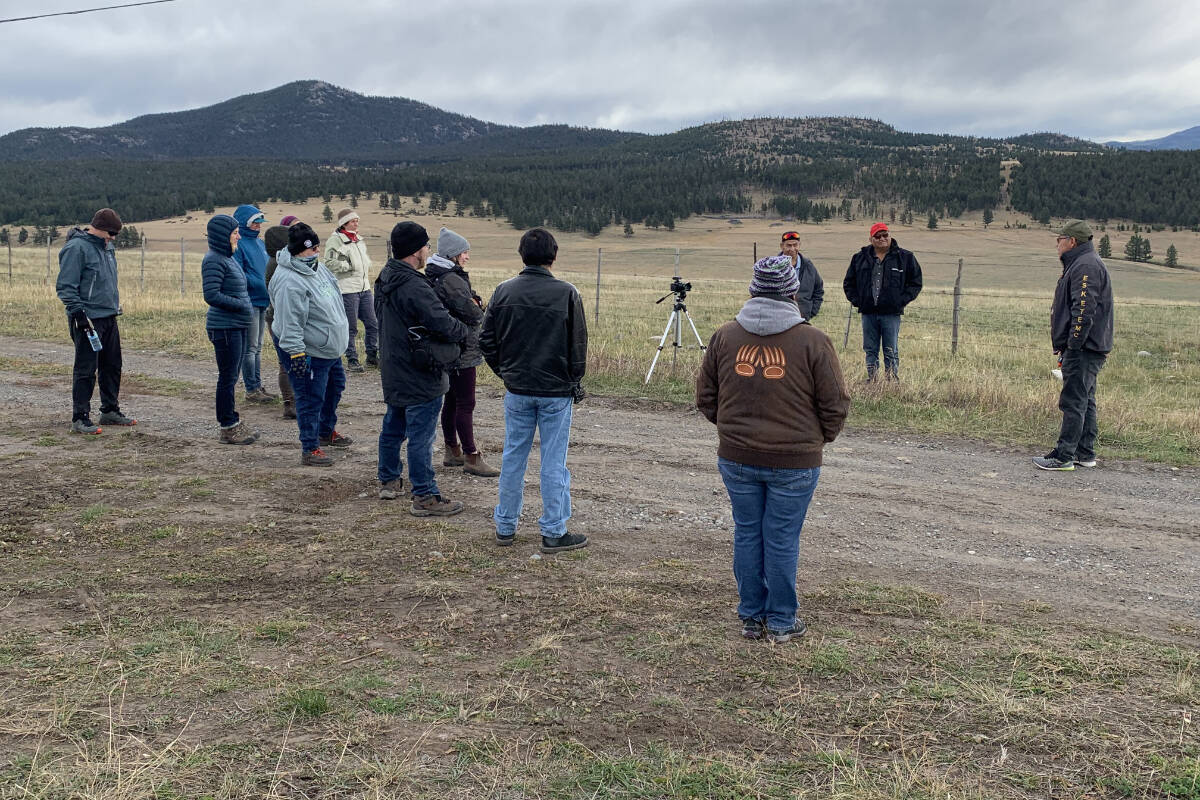Warning: The details in this story may be triggering. Supports are available at the Indian Residential School Survivors Society (IRSSS) at 1-800-721-0066.
There are presently 77 residential school survivors in the small First Nations community of Esk’etemc south of Williams Lake, said Chief Fred Robbins.
When Williams Lake First Nation (WLFN) released its preliminary results from the investigation into the former St. Joseph’s Mission Indian Residential School, 48 of Esk’etemc’s survivors attended a gathering to watch the livestream in the community’s gym.
“It was a very emotional day surrounded by ceremony and truth-telling,” Robbins said, noting there are just over 500 people in the community. “I think it really helped and the healing journey has started.”
During the press conference WLFN Chief Willie Sellars noted the investigation revealed 93 potential graves that require further analysis.
READ MORE: ‘93 is our number’: WLFN reveals St. Joseph’s Mission preliminary findings
On Friday, Jan. 28 Robbins along with hereditary chief Francis Johnson Jr., and residential school survivors Marilyn Belleau, Julianna Johnson, Irene Johnson, Freddie Johnson Sr. and Rick Lulua met virtually with Marc Millar, Minister of Crown and Indigenous Relations and Northern Affairs Canada.
During the meeting, Millar and Johnson jointly announced the federal government was releasing $387,000 to support the community with its efforts toward reconciliation and healing for residential school survivors.
Millar stated in a news release about funding the government’s thoughts were with Esk’etemc, the survivors and their families as they begin to heal from the horrors experienced by many children who were taken away from their communities and cultures to attend St. Joseph’s Mission Residential School.
“We remain committed to supporting Esk’etemc First Nation on your spiritual walk to finding the truth, to bringing the spirits of your children home and your healing,” Millar noted.
Last year Esk’etemc hosted a Bringing Our Spirits Home walk from the St. Joseph’s Mission site to Esket, using the route some children took when they ran away from the mission.
READ MORE: Walk from site of former St. Joseph’s Residential School to Esk’etemc a healing journey
It is hoped the walk will become an annual event and some of the government funds will go toward it, as well as some land-based activities to reclaim culture.
Plans are also in the works to put up a monument to honour Duncan Sticks, an eight-year-old who ran away from the mission and died when he froze to death in 1902.
The monument will be erected where Sticks’ body was found near Felker Lake Road and perhaps something else to honour him in the cemetery at Esket, said Calvin Dubray, a former School District 27 principal now working for Esk’etemc as its education coordinator.
It is important to keep the knowledge and the history of residential school survivors, Robbins said, noting the overall impact of St. Joseph’s has been felt by 15 First Nations bands.
“I think Mr. Millar needs to realize when it comes to residential schools, it isn’t just impacting one community. It’s impacting generations upon generations.”
Robbins anticipates there will be more possible burials found once a larger area around the mission site is investigated.
“There may be one or two graves out in the middle of nowhere and the next step will be to identify which children came from which community. For us it is 15 communities that are going to have to do DNA testing.”
Calling on the churches and federal government to release any information available, Robbins said specifically there is information missing from the years 1940 to 1972.
Dubray described how Esk’etemc has been working with local teachers within SD 27 to offer some workshops.
“Chief Fred and I went to Ryan Hanley who is the Pro-d rep for the Cariboo Chilcotin Teachers Association and Columneetza teacher Nara Riplinger to develop a partnership to build cross-cultural awareness,” he said. “We’ve already had two groups of teachers come out to Esk’et for a two-day workshop with about 12 to 15 in each group.”
Teachers learned from residential school survivor Dave Belleau who was trained by world-renowned trauma specialist Patricia Vickers, and shared how residential schools impacted his generation and the next generation.
Freddie Johnson Sr. and Robbins shared knowledge about traditional sweat ceremonies, their uses, protocols and then conducted a sweat with all the teachers.
“Freddie sang and talked and everyone offered up prayers,” Dubray said.
On the second day the teachers learned the “true history” of Esket and the Alkali Valley from the chief, information one won’t learn from a text book, Dubray added.
The hope is the teachers will share the information in their classrooms or even bring students out to learn about the culture and impact of residential schools themselves.
Johnson recalled working with former SD27 superintendent Mark Thiessen and the conversations he had at the time about reconciliation with First Nations people and how education is so important.
“These residential schools were meant to educate First Nations people,” Robbins said. “I really do think we need to begin with the schools to start a new chapter on what it means to be First Nations to put a stop to discrimination and racism. We have to educate the youth about the impacts of the schools in order to change mainstream society in the future.”
news@wltribune.com
Like us on Facebook and follow us on Twitter
First NationsIndigenous reconcilliationresidential schools



